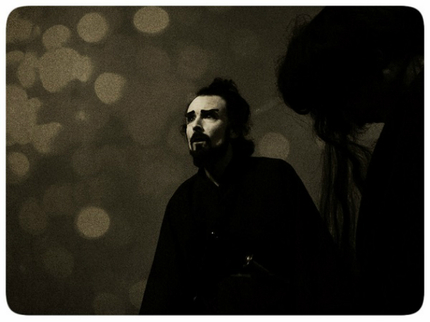Hamburg 2015 Review: SAMURAY-S, A Stunning Meta-Hypnosis From Another Planet

Raúl Perrone's Samuray-S is a film from a different planet. It is a distant planet they once called cinema. The Argentinean maverick, who directed 28 films in 40 years without any external funding, seems to work with a whole different catalogue of technical means, has created a stunning meta-hypnosis on the genre of the samurai-film.
But it is also a living proof that the feelings of fragility and disappearance are not tied to the material of film, as Samuray-S employs a fascinating approach that combines a silent film language with digital cinema.
It is not an easy one to find words for. In its core, it is an epic experimental (what a silly word!) film about the sadness of enchantment or about the impossibility of love in a world of trauma and violence. We follow three different chapters that meet in the constant rain that reminds us of Kurosawa's Rashomon and looks like filmstrips falling down those hypnotic images.
In terms of storytelling, the film focuses on the essence of the journey through a genre. It is about revenge, murder, love and love lost. The way those episodes are linked together more by the rhythm and icons of the world of cinematic samurai reminds of Pere Portabella but in the end it is something completely different.
The only language heard in Samuray-S is cinema. Perrone is heavily in love with silent film aesthetics and his look, framing and his exceptional manner to film close-ups are closer to Jean Epstein than Akira Kurosawa.
In some regard, Perrone could be compared to Radiohead, as there are two paths to appreciate his work. We can either just look and listen to his film, fall in some kind of trance and feel his digital materiality, his sense for emotions that is heightened here with sequences accompanied by Samuel Barber or Chet Baker. Like in his Favula, music and sound are very important. Then our eyes dance with the screen.
Or we can analyze his revolutionary aesthetics, for he clearly achieves something new and deeply original by combining strange and beautiful digital effects -- if we look at the sky in his films we find other-worldly miracles -- with silent film language. We could even say that he is one of the few filmmakers that finds organic qualities in digital cinema as the images constantly transform themselves.
There are many things going on but one of the more obvious is Perrone's breathtaking use of rear projections and double exposures. Those devices carry the picture in a surreal world beyond its production circumstances. How is it possible that a man living and shooting in Ituzaingó, a suburb of Buenos Aires, makes us dream a fever dream of samurais?
Rear projections and double exposures are also part of the program of disappearance we sense in Samuray-S. There is a constant fear of death, visible and tangible. Something is always following those images, their memory and the threat of a cut. Everything menaces to disappear: Lights, shadows, love and cinema.
Perrone has not necessarily saved anything; he rather has documented the disappearance. He has done it in such a masterful and tender way that we can only keep watching and continue our search for words that hopefully will continue to fail for then cinema is alive. At the end of the month the Viennale will host a retrospective of Perrone, where we might discover other treasures of unclassifiable beauty.
Samuray-s
Director(s)
- Raúl Perrone
Writer(s)
- Silvina Gianibelli
- Raúl Perrone
Cast
- Ornella Retro
- Jose J. Maldonado
- Miguel Sirna
- Tony Alba

Do you feel this content is inappropriate or infringes upon your rights? Click here to report it, or see our DMCA policy.




 (1)-thumb-80x80-93563.jpg)

